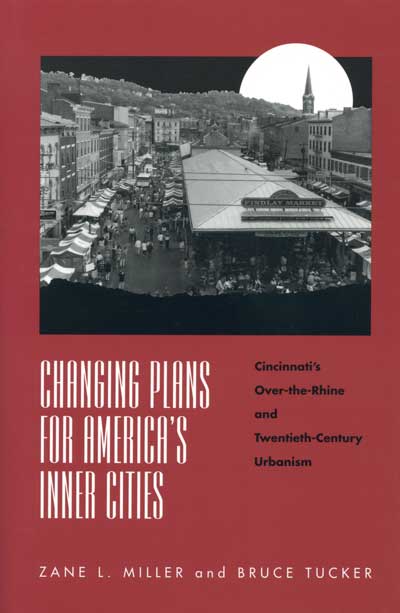Changing Plans for America’s Inner CitiesCincinnati’s Over-the-Rhine and Twentieth-Century UrbanismZane L. Miller and Bruce TuckerUrban Life and Urban Landscape |
 2/13/1998 224 pp. 6x9  | |||
|
“deeply felt and thought provoking” —H-Urban, H-Net Reviews, July, 1998 Cincinnati’s historic Over-the-Rhine neighborhood began in the nineteenth century as a nonelite suburb and became in the twentieth century an inner-city slum, burdened with a broad range of problems characteristic of such places everywhere in the United States. As Zane L. Miller and Bruce Tucker point out, however, Over-the-Rhine’s history is also the history of planning for both inner-city neighborhoods and big-city downtowns. Beginning in the 1920s, Cincinnati’s government and civic leaders explored the entire repertoire of policies and programs considered or implemented in cities throughout the country for such closed-in neighborhoods. The first set of attempts included schemes for comprehensive planning, zoning, slum clearance, redevelopment, and neighborhood conservation and rehabilitation. Over-the-Rhine survived this first assault on the slums, but at mid-century a new understanding of the city generated different visions of Over-the-Rhine’s future and long and bitter fights for control of that future. While factions fought, the neighborhood deteriorated, and by the 1990s it was one of the poorest and most violent parts of the city. The story ends with a double irony: the adoption of an Over-the-Rhine “urban renewal” plan that endorsed a ghettoish status quo; and the murder of Buddy Gray, the city's premier white community organizer, by a mentally troubled man whom Gray had rescued from the streets and befriended. Miller and Tucker look beyond the fight over slums to illuminate other issues in American civilization. They focus on changing concepts of culture, neighborhood, and community as dynamic factors, and basic components of city planning. Changing Plans for America’s Inner Cities is essential reading for anyone concerned with the future of urban neighborhoods. Zane L. Miller is a professor of American history and director of the Center for Neighborhood and Community Studies at the University of Cincinnati. He is a past president of the Urban History Association, and in 1996 he won the University of Cincinnati’s Oscar Schmidt Award for Public Service. Bruce Tucker is an associate professor of history at the University of Windsor. | ||||

